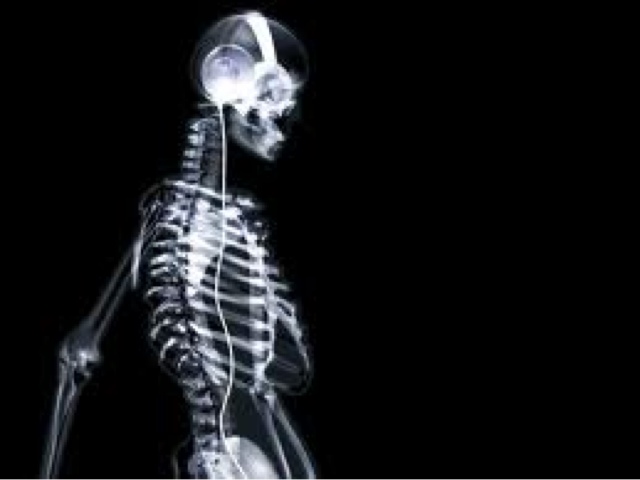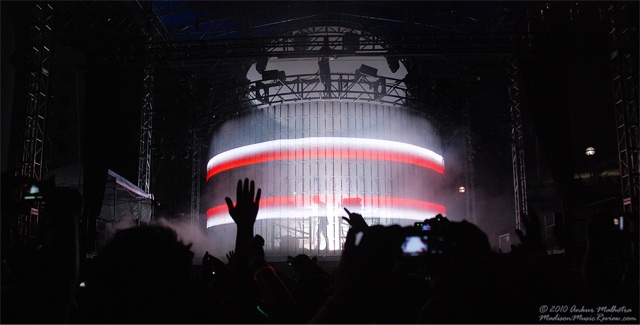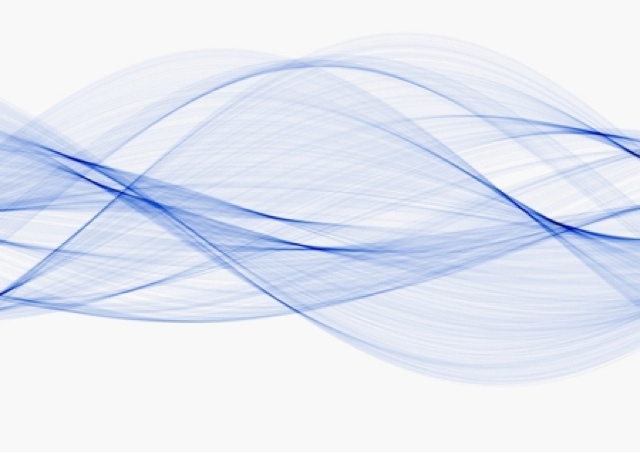I've been giving a lot of thought recently to the experience of recorded media within a live theatrical performance. How does our interaction with the recorded media shape and colour our experience of the live performance in front of us? I'm sure everyone has been in an audience when a poorly mastered sound cue took them "out" of the world of the play, reminding them of the reality of their situation seated and observing a real and live, truthful fiction. In such instances, the recorded medium which is intended to add "reality" to the scene serves exactly the opposite purpose reminding the audience of the falsity of the performance, the pretense and conventions, the audience's choice to "buy in".
Of course, there are times when particularly well-designed sound can add significantly to the experience. Most notably in my memory was the sound design for Rupert Goold's Decade (Headlong, London UK, 2011) wherein beautifully spaced siren sounds across multiple speakers in the space created an effect of ambulances surrounding the building, heigtening the potential as an audience member to be coerced in to the world of the play. These instances add colour to the theatrical experience, and for audiences seeking something like the "reality" of movies and television, offer a shade of this.
Other art forms use recording; dance, most obviously, but also music. The work of Steve Reich has for years dabbled in the inclusion of recorded media within live performance; in the case of Reich's work, he pushes at the edge of our understanding of live performance. The recording is being played live, and also manipulated (at times by Reich himself) so what makes this any less live? Going further, modern DJ culture, even when sold as a "live" performance is still at its core a living performance of recorded media. The sounds pre-exist, unlike the cellist or drummer who creates the sound live, pushing it into the ether in that very moment. But is one necessarily better than the other? The DJ is still manipulating that recorded sound in a way that is unlike any previous manipulation; the risk factors at play mean that like the violinist who could play a squeaky note, the DJ could not mix the sounds together in a pleasurable way, could not match the beats together, etc.
All of this thought leads me to my current project; alongside my husband (DJ and Producer John Norman) I will be creating a piece of audio theatre which will correspond with a live DJ performance of his. Each of us will be working with our sounds, the materials pre-recorded. Then, the audience will be invited to experience them live from their recorded state. Furthering the experiment, we will question what occurs when the two live experiences of recorded media are experienced together; audience members will be able to listen to the play in their personal mobile devices with headphones, while around them hearing the DJ set. Our key questions are: how do these two experiences function independently, and in tandem with one another? Is there a new sort of experience this opens up to the audience members? Is either performance impacted by the correlation with the other?
More on the project soon....keep some time open in mid-August to come check it out.
Of course, there are times when particularly well-designed sound can add significantly to the experience. Most notably in my memory was the sound design for Rupert Goold's Decade (Headlong, London UK, 2011) wherein beautifully spaced siren sounds across multiple speakers in the space created an effect of ambulances surrounding the building, heigtening the potential as an audience member to be coerced in to the world of the play. These instances add colour to the theatrical experience, and for audiences seeking something like the "reality" of movies and television, offer a shade of this.
Other art forms use recording; dance, most obviously, but also music. The work of Steve Reich has for years dabbled in the inclusion of recorded media within live performance; in the case of Reich's work, he pushes at the edge of our understanding of live performance. The recording is being played live, and also manipulated (at times by Reich himself) so what makes this any less live? Going further, modern DJ culture, even when sold as a "live" performance is still at its core a living performance of recorded media. The sounds pre-exist, unlike the cellist or drummer who creates the sound live, pushing it into the ether in that very moment. But is one necessarily better than the other? The DJ is still manipulating that recorded sound in a way that is unlike any previous manipulation; the risk factors at play mean that like the violinist who could play a squeaky note, the DJ could not mix the sounds together in a pleasurable way, could not match the beats together, etc.
All of this thought leads me to my current project; alongside my husband (DJ and Producer John Norman) I will be creating a piece of audio theatre which will correspond with a live DJ performance of his. Each of us will be working with our sounds, the materials pre-recorded. Then, the audience will be invited to experience them live from their recorded state. Furthering the experiment, we will question what occurs when the two live experiences of recorded media are experienced together; audience members will be able to listen to the play in their personal mobile devices with headphones, while around them hearing the DJ set. Our key questions are: how do these two experiences function independently, and in tandem with one another? Is there a new sort of experience this opens up to the audience members? Is either performance impacted by the correlation with the other?
More on the project soon....keep some time open in mid-August to come check it out.



